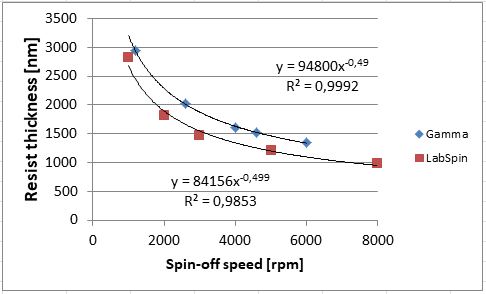Specific Process Knowledge/Lithography/MiR
Feedback to this section: click here
AZ MiR 701 is a positive UV photoresist.
Spin coating

Post-exposure bake
During exposure, interaction between the incoming light and the light reflected by the substrate can cause a standing wave to form in the resist (especially true for single line/wavelength exposure). This leads to a wavy sidewall after development. The standing wave pattern can be removed by introducing a post-exposure bake before development, which allows the activated PAC to diffuse into un-activated regions, thus smoothing the sidewall. The recommended PEB for MiR is 60s at 110°C (1-2µm film). Thicker coatings may require longer bake, and substrate thickness and material, e.g glass, may also affect the required baking time.
As the post-exposure bake is at an elevated temperature compared to the soft bake, it will cause the resist film to become 5-10% thinner (probably due to continued evaporation of solvent). A 1.5µm thick MiR resist film will be approximately 1.4µm after PEB.
Development
A 1.5-2µm MiR resist film is fully developed in 60s using TMAH (AZ 726). Depending on the exposure dose, thicker coatings may develop in 1 min, but it is probably better to aim for a similar development speed (2µm/min).
